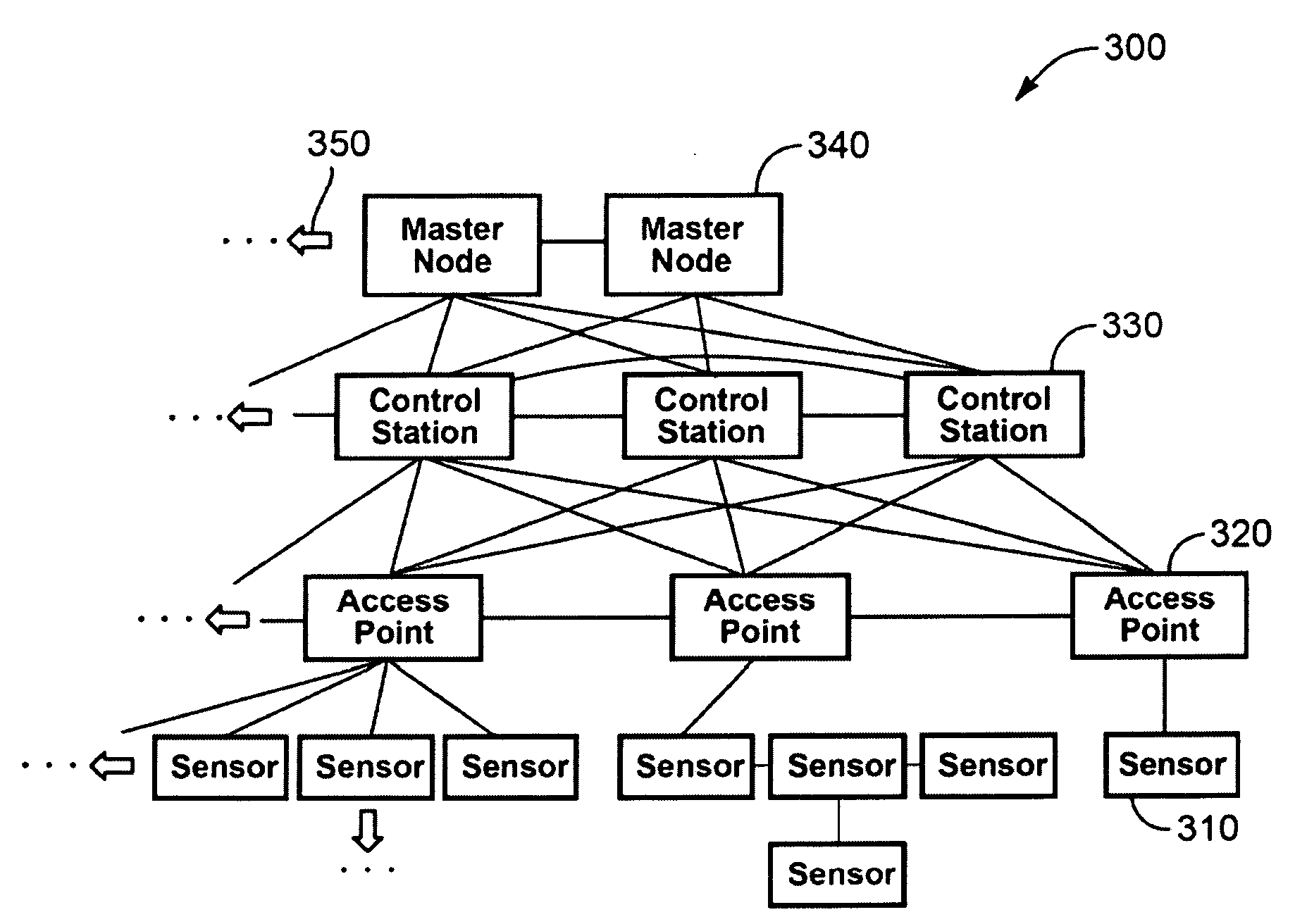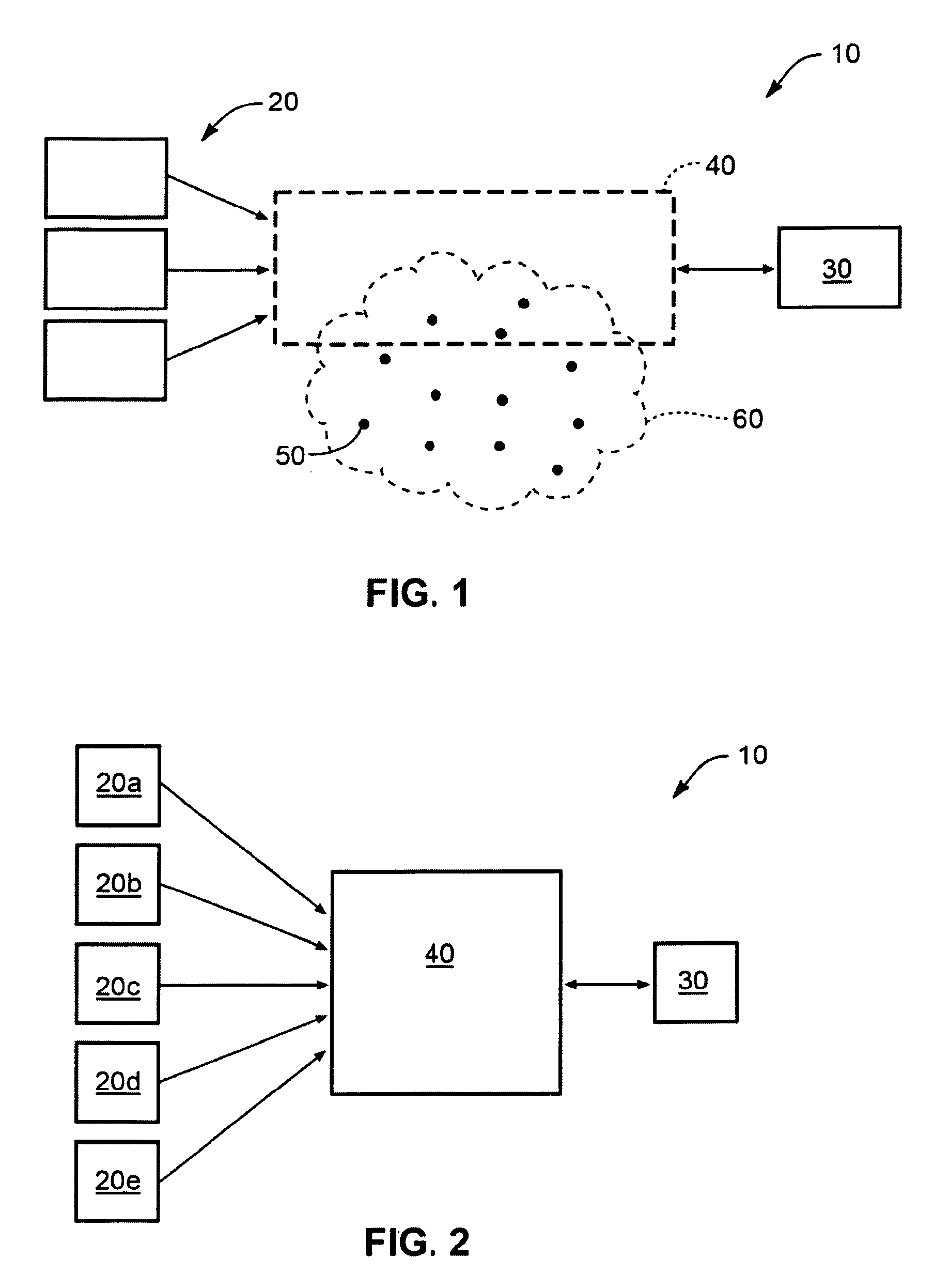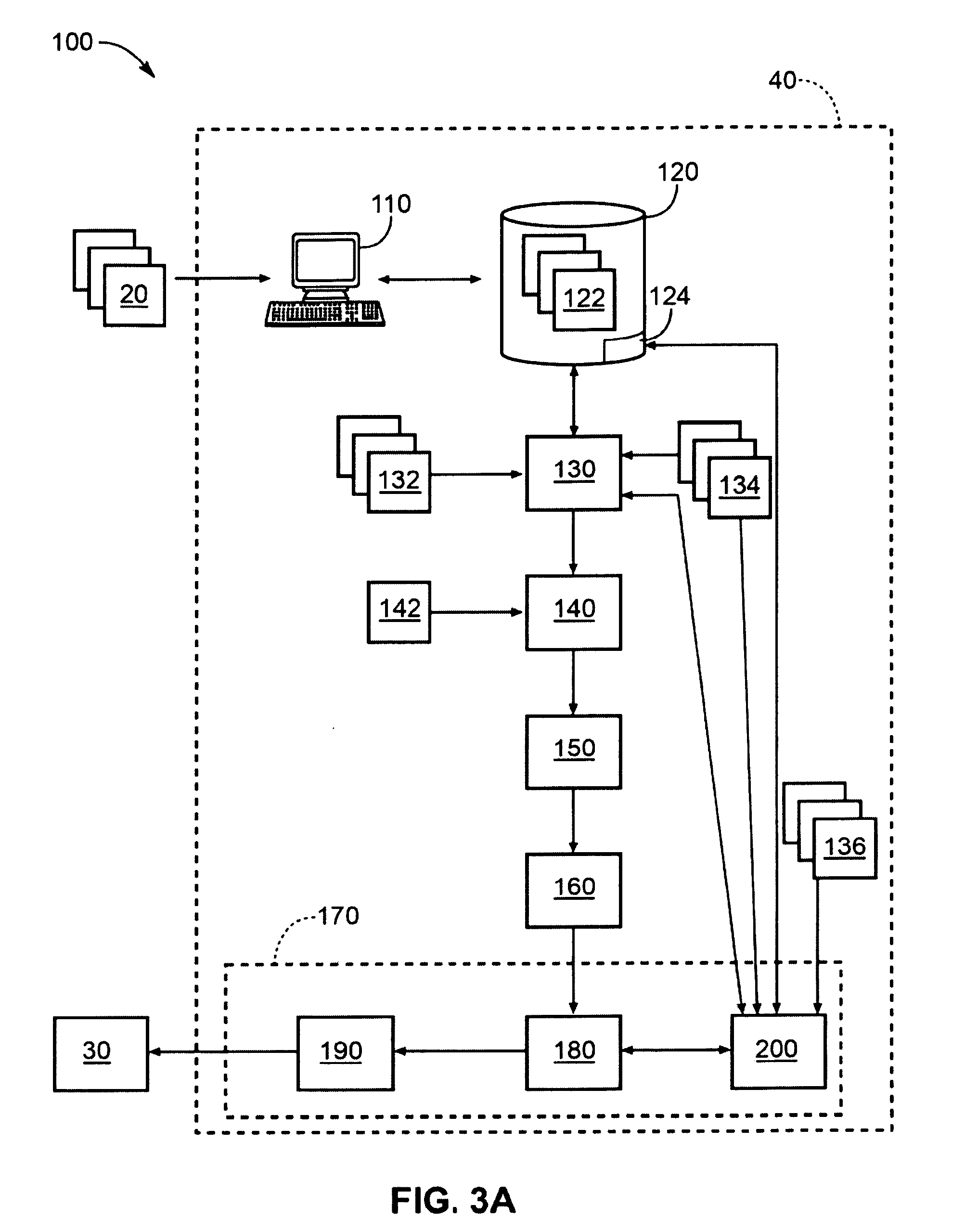Technique and Architecture for Cognitive Coordination of Resources in a Distributed Network
a distributed network and cognitive coordination technology, applied in the field of network resources, can solve the problems of complex reliability and security, network problems such as a variety of problems or limitations, collaboration and coordination among various components of a given network can pose a variety of challenges, and achieve the effect of promoting the conformance of services and promoting the observance of performan
- Summary
- Abstract
- Description
- Claims
- Application Information
AI Technical Summary
Benefits of technology
Problems solved by technology
Method used
Image
Examples
example 1
[0084]FIG. 4 represents an embodiment of a system 200, such as the systems 10, 100. In the following, some resources are designated as services. In the present example, it is assumed that every resource has a unique address in a network. The system 200 comprises a coast guard patrol fleet guarding a coastline. The system 200 includes a surveying station 210 (also referred to as “SS”) which has at its disposal a radar service that can be invoked using an API, which is exported by a central radar agency 220 (“CRA”), for detecting intruder vessels within the surveyed territory. The system 200 further includes a command station 230 (“Command”), a first destroyer 240 (“Destroyer1”), and a second destroyer 250 (“Destroyer2”). If the surveying station 210 detects an intruder vessel 260, it sends a report to the command station 230 informing of the intrusion as well as the location of the intruder 260. On receiving an intrusion report, the command station 230 sends information regarding the...
example 2
[0099]Wireless sensor networks can be advantageously employed in a wide variety of applications. Some wireless devices (which can also be referred to as “motes”) that are capable of collecting data from a sensor and relaying that data wirelessly throughout a network via any suitable method can allow for autonomous collection and processing of environmental conditions over a given area. Certain of such motes can communicate via radio frequency (“RF”) transmissions, and may communicate with other motes in the network.
[0100]FIG. 5 represents an embodiment of a system 300, such as the systems 10, 100, 200, which can comprise a wireless sensor network. The system 300 can be configured for use in intelligent monitoring and control of soil properties and irrigation. For example, in some arrangements, a watering system for a landscaped property comprises the system 300. Embodiments of the system 300 can be adapted for use in other environments as well, as further described below.
[0101]In ce...
PUM
 Login to View More
Login to View More Abstract
Description
Claims
Application Information
 Login to View More
Login to View More - R&D
- Intellectual Property
- Life Sciences
- Materials
- Tech Scout
- Unparalleled Data Quality
- Higher Quality Content
- 60% Fewer Hallucinations
Browse by: Latest US Patents, China's latest patents, Technical Efficacy Thesaurus, Application Domain, Technology Topic, Popular Technical Reports.
© 2025 PatSnap. All rights reserved.Legal|Privacy policy|Modern Slavery Act Transparency Statement|Sitemap|About US| Contact US: help@patsnap.com



